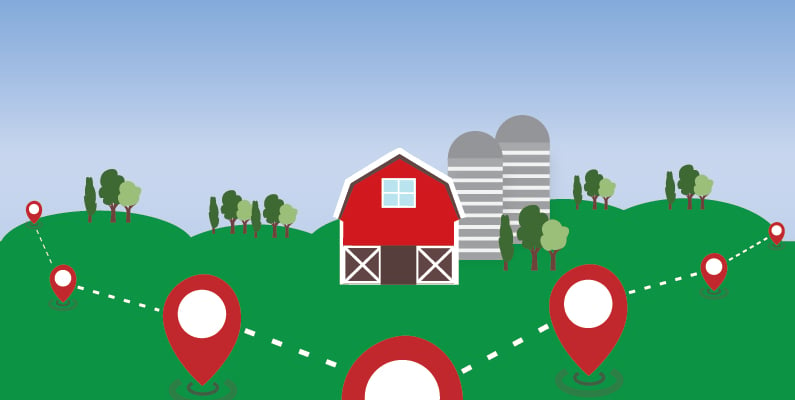Geofencing: how digital architecture comes to life
Opening the digital fence and what happens once you’re inside
Geofencing is the magic of digital architecture. Whether it’s through apps, online or installed in monitors in tractors and combines, this electric fence of sorts creates boundaries around plots of land to define space. It’s also the underlying foundation of precision ag.
Enter telematics[i] – the process of sending and receiving computerized data over these geofenced spaces. This is used to oversee equipment and machines remotely, to track livestock, and to manage pickups and deliveries of products. Think about mapping water use, different crops and where they grow, and historical use of land over time[ii]…these are just a few of the many variables tracked using geofencing and telematics. Together, these facilitate better productivity and competency.
Geofencing represents significant marketing opportunities.
In recent years, we have learned how to simultaneously maximize and minimize technology. Now we – marketers and farmers – can multitask on the smallest device possible. Read emails, buy something online, capture field data, the list goes on.
Geofencing works through GPS and Radio Frequency Identification (RFID), in addition to wi-fi and cellular data. Using this GPS and RFID software, virtual boundaries or maps are established around specified locations. These could be around retailer locations or other physical spaces, including farms, fields and industrial buildings such as processing and packing plants. When a farmer enters into this coded GPS/RFID-identified space, their smartphone or tablet connects to the local product manufacturer or retailer, which then triggers a message back to the farmer, asking if it can connect to their location. When the farmer grants permission, the geofence opens and the relationship begins.
For a marketer and in the ag retail space, this is the perfect opportunity to woo the farmer with coupons, discounts and special brand events and opportunities. For the farmer or ag professional, this translates into engagement. In addition to standard social media links and promotional add-ons, it also keeps the farmer in the physical environment through advanced technology that is capable of recognizing down to actual entrance and exit points.
Farm Equipment magazine’s 2018 Marketing Expenditure’s survey[iii] notes that geofencing is among the top marketing techniques to be integrated by 2020, adding that newer and more advanced technology brings with it more opportunities. Similarly, it is ag dealers earning at least $50 million annually who are more likely to adopt this type of marketing.
As marketing evolves, it’s easy to wonder what’s next. In the geofencing world, privacy and security remain a key consideration and will continue to ensure that consumers are getting the most out of the customer journey without having their personal security compromised. That said, in the advanced technology of spatial data, SBWire[iv] predicts a 27.5 percent growth in geofencing by 2022. If all goes as planned, geofencing as an ag tech platform and a marketing vehicle is here to stay.
Never miss an article.
Get the latest sent straight to your inbox.
Related Articles
You can’t have one task without the other
Marketing to ...


